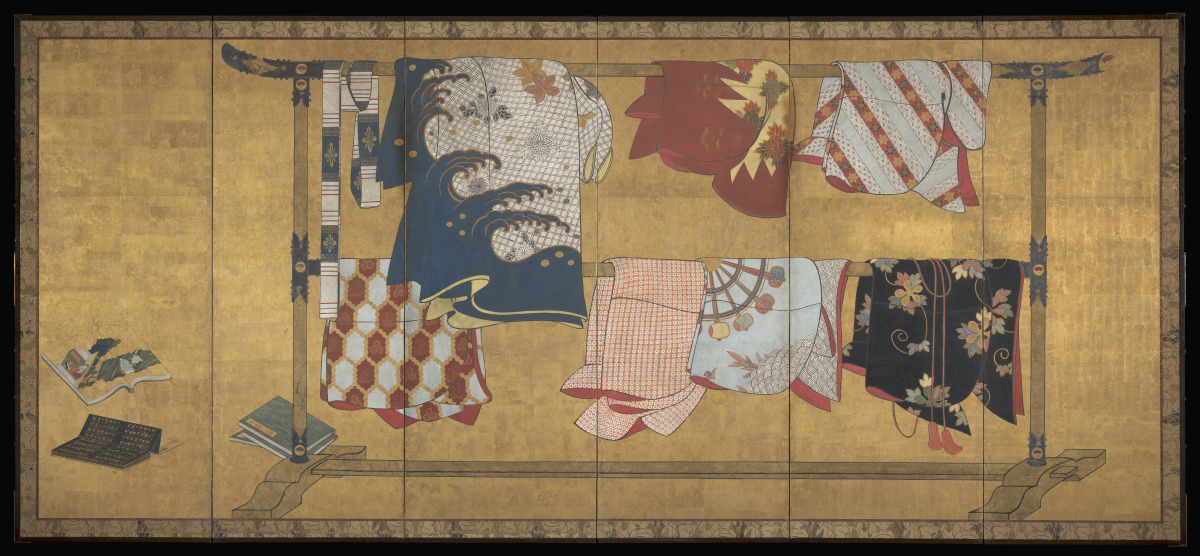
Whose Sleeves? (Tagasode) (Translation)
誰が袖図屏風 江戸時代 六曲一双 金地著色 (Primary Title)
Unknown (Artist)
This pair of screens depicts women’s kimonos hanging from two lacqured stands, with five on the black rack, seven on the gold, and five in a tray, echoing the 5-7-5 rhythm in the haiku poem. The vibrant colors and the intricate floral and geometric motifs reveal distinctive designs and luxurious costumes produced in Kyoto during the 17th century. Although human figures are absent from the scenes, the illustrated Tale of Genji and an unfolded Buddhist sutra on the floor convey the owner's classical and spiritual pursuits.
Early to mid-Edo period (1615-1868)
None
None
Excerpt of Mahasamnipata Sutra (大方等大集経) on left screen: 遠離三種塵勞垢 成就三種清淨慧 已於三有得解脫 是名寶炬陀羅尼 能悉破壞貪恚癡 亦得遠離煩惱濁 除滅無明諸邪闇 是名寶炬陀羅尼 眾生音聲上中下 一切悉能了了知 能隨眾生意說法 是名寶炬陀羅尼 具足甚深無量義 亦復具足諸字句 遠離於我及我所 是名寶炬陀羅尼。
Arthur and Margaret Glasgow Endowment
第二回日本名寶展, 主催讀賣新聞社. The Second Exhibition of Japanese Treasures, organized by Yomiuri Shimbun, Tokyo, 1930.
Image released via Creative Commons CC-BY-NC
Some object records are not complete and do not reflect VMFA's full and current knowledge. VMFA makes routine updates as records are reviewed and enhanced.
